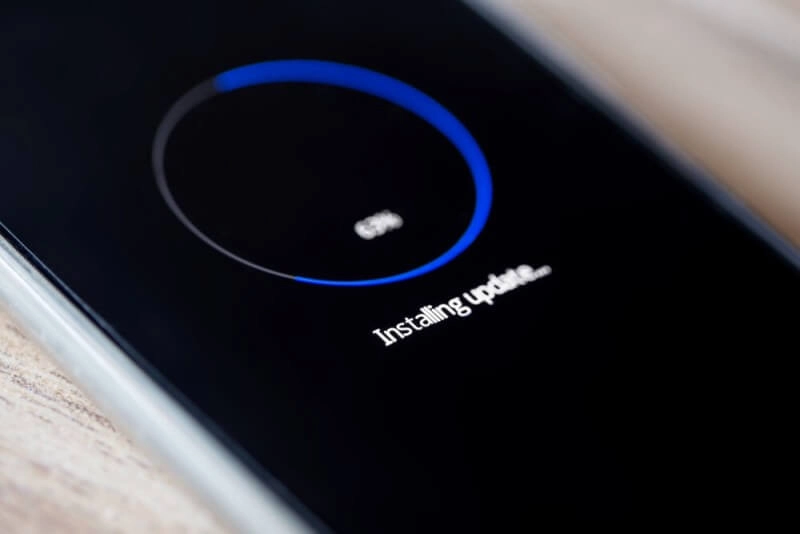One of the most widely used operating systems for smartphones, tablets, and smart TVs is Android OS. An OS is thought of as a crucial component of any device; it is the central module that may enhance a business’s reputation or even cause it to fail. The explanation is straightforward: The OS is a device’s initial interface with the user. All the hardware resources, such as the camera, speakers, display, etc., are managed by an operating system.
An Android developer creates custom ROMs, which are customised versions of the Android operating system with less software features to improve a device’s performance. You may modify your device’s user interface (change themes, the layout of the status bar and navigation bar), add unique modules and frameworks, and more with a custom ROM.
Many custom ROMs are already rooted, allowing you to use different Magisk modules, SuperSu, and other features right out of the box. Let’s go through the several advantages that flashing a custom ROM affords you in more depth.
A Custom Rom’S Definition
An Android operating system that has been changed, or “custom ROM,” might have as little functionality as possible or be completely loaded with sophisticated capabilities. The Android Open Source Project (AOSP), which offers the essential functions and apps needed for everyday productivity, such as contacts, a calendar, email, and a camera, is the foundation for the majority of custom ROMs.
Current Updates
Giving its consumers monthly security updates and fixes is one of Android’s key benefits. Slow updates are provided by several manufacturers for their products. On the other side, Google provides the most recent software upgrades for its main products the same day a newer operating system is made available. Push updates depending on area, time, and testing for manufacturers that have their own native operating systems based on Android, such as MIUI by Xiaomi, OneUI by Samsung, etc.

Custom ROMS are maintained by individual users or teams of users that collaborate, and there is fierce market rivalry. Depending on the user base, they may release updates weekly or monthly while doing this for free.
UI Personalization
Custom ROMS are more famous for their customization features, which let you change the user interface and give it a unique, attractive appearance. Users who are tired of their device’s UI having the same appearance can benefit from custom ROMS theme engines with the majority of AOSP-based ROMS, including MIUI, Resurrection Remix CarbonOS, etc. To make operating system navigation easy for users and boost productivity, developers provide a simple user interface. A simple user interface keeps the system running quickly with fewer transitions and effects.
Nothing Bloated
When you root an Android smartphone, you have the ability to remove native operating system bloatware and pre-installed software. Even yet, a lot of the time the gadget has problems even without the pre-installed programmes from the company. Custom ROMS don’t come with any pre-loaded applications, and if they do, you may delete them without encountering any problems.

As we’ve previously said, the majority of custom ROMs are built on AOSP, which only includes the essential applications for everyday use. Before flashing the custom ROM, developers also offer the choice of selecting specific apps.
Performance Improvement
Even if unnecessary applications are already deleted in custom ROMS, doing so conserves storage space and improves efficiency by cutting down on the amount of resources used by several programmes in the background. Additionally, customised ROMS include thermals and kernels that are optimised for low RAM usage. Additionally, custom kernels aid in boosting CPU and GPU power for powerful gaming and multitasking.
Additional Battery Backup
Less apps are already included in custom ROMs, which are also performance-optimized. It aids in preserving battery life since there are no resource-intensive programmes operating in the background.

When the system is not in use for demanding tasks like gaming or 4K video viewing, many developers are at work on the device. These functions seem promising and are thought to improve battery health for extended use.
Mods
Mods, which provide numerous features and adjustments to the system and user interface, are an essential component of Custom ROMs. Simple or complicated custom modifications are possible, giving you the chance to boost the speakers’ audio output above the manufacturer’s maximum capacity. Other modifications might include boosting the display’s DPI, gcam tweaks, navigation layout changes, Magisk modules, etc.

consumers are drawn to flash custom ROMs by custom mods, and developers constantly endeavour to provide new features and updates to make it easier for consumers to utilise a reliable ROM.
One-Stop Experience
Nowadays, a lot of firms release new cellphones with enhanced technology, and people constantly switch out their gadgets. When a user switches from one brand of device to another, they must migrate to a new operating system. For instance, if a user was using a Xiaomi smartphone that runs on MIUI and purchases a new Oneplus device that runs on OneUI, they may find it difficult to adjust to the new environment. After the Github manufacturer releases the kernel-source-codes, custom ROMS are easily accessible when a big brand device is launched.

Users who currently have a specific custom ROM installed on their device, such as LineageOS, ArrowOS, AOSiP, CorvusOS, etc., can flash that ROM to get the same features and functionality. The user might ask the developer of the preceding device to transfer the custom ROM if it is not already available for the device.
Portable Apps
Some pre-installed apps are made exclusively by manufacturers for a certain range of devices. These applications end up being beneficial and aid in the optimisation of other Android devices. The Gaming Turbo on Xiaomi handsets and the Fnatic Mode on OnePlus devices are two of the greatest programmes I’ve used. Such applications may be installed on several Android smartphone manufacturers with the aid of modified ROMS. The specific app may be ported by developers to any custom ROM.
Mobile ROMs
Developers may also handle ROMs from devices of a different brand, such as OnePlus ROMs that can be used on Xiaomi devices and vice versa, as we’ve already covered. This aids in maximising the performance of a device’s CPU and GPU, which are power-optimized for that specific device. For instance, the operating system (OxygenOS) from the OnePlus 6T may be migrated to the Poco F1 and MIUI 12 on the OnePlus 6T.

Conclusion
Custom ROMs provide the finest user experience and new features. We may argue that only Android-based devices are designed specifically for custom ROMS. Although Google financially supports the Android Open Source Project, developers are free to use and modify the source codes. Manufacturers may also learn about the advantages and disadvantages of their original operating system by using custom ROMS. We’ve written a lot of posts on installing modified Android ROMs. It’s time to flash and experiment with a custom ROM if your smartphone is obsolete and has ceased delivering updates.










